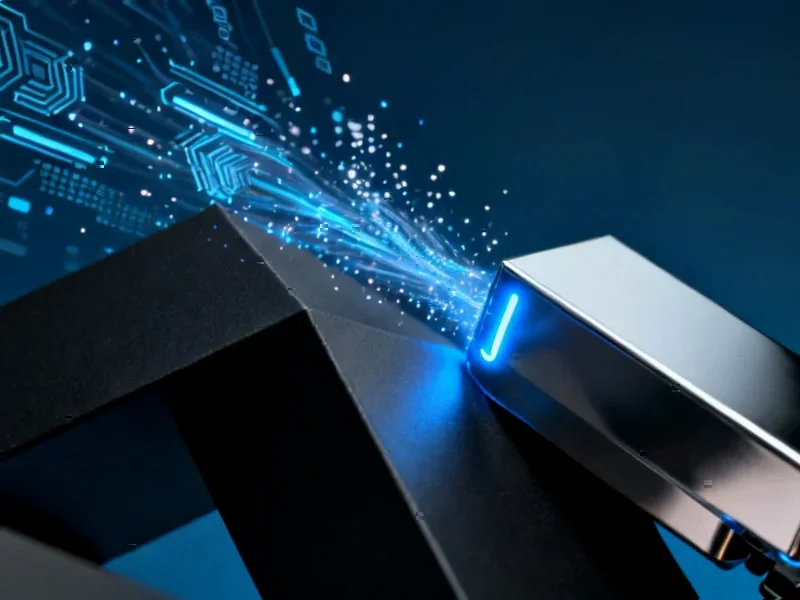According to Bloomberg Business, South Korea’s LG Chem Ltd. and China’s Sinopec Group have formed a partnership to develop materials for sodium-ion batteries, which are emerging as a promising next-generation energy storage technology. The battery manufacturer confirmed it signed an agreement with Sinopec last month specifically focused on developing cathode and anode materials for sodium-ion cells. Sinopec, while being China’s largest crude oil refiner, is actively expanding into new energy businesses alongside its traditional oil and gas operations. The partnership represents a significant strategic move by both companies to position themselves in the evolving battery technology landscape. This collaboration signals a major shift in energy storage strategy that warrants deeper analysis.
The Business Logic Behind the Partnership
This partnership represents a classic case of complementary strengths creating strategic advantage. LG Chem brings decades of battery materials expertise and global manufacturing capabilities, while Sinopec offers massive chemical processing infrastructure and dominant market position in China. More importantly, Sinopec’s traditional oil refining business provides access to petroleum coke—a key potential raw material for sodium-ion battery anodes. The timing is particularly strategic as both companies face pressure to diversify beyond their core businesses. For Sinopec, this represents a crucial hedge against the long-term decline of fossil fuels, while LG Chem gains a powerful partner to challenge Chinese dominance in battery materials manufacturing.
The Sodium-Ion Economic Opportunity
The financial implications of this move extend far beyond the immediate partnership. Sodium-ion batteries offer a fundamentally different cost structure compared to lithium-ion, with sodium being approximately 300 times more abundant than lithium in the Earth’s crust. This abundance translates to potential material cost reductions of 30-40% according to industry analysis. The technology particularly targets the stationary energy storage market, where weight and energy density are less critical than cost and safety. With the global energy storage market projected to exceed $500 billion by 2030, capturing even a modest share of this market could generate billions in revenue for the partnership. More importantly, it positions both companies to benefit from the massive infrastructure build-out required for renewable energy integration.
Redefining the Battery Competitive Landscape
This partnership directly challenges the existing lithium-ion hegemony dominated by companies like CATL, BYD, and Panasonic. By focusing on sodium-ion technology, LG Chem and Sinopec are effectively creating a new competitive arena where traditional lithium-ion leaders may have less advantage. The collaboration also represents a significant geopolitical shift, combining South Korean technological expertise with Chinese manufacturing scale and market access. This could potentially circumvent some of the trade restrictions and supply chain vulnerabilities that have plagued the lithium-ion battery industry. For automotive and energy storage customers, this partnership creates a viable alternative supplier ecosystem, potentially driving down prices and increasing technology options across the board.
The Road Ahead: Technical and Commercial Hurdles
Despite the promising strategic positioning, significant challenges remain. Sodium-ion batteries currently lag behind lithium-ion in energy density, which limits their application in electric vehicles. The technology also faces manufacturing scalability issues, as existing battery production lines are optimized for lithium chemistry. From a business perspective, the partnership must navigate complex intellectual property sharing arrangements and potential regulatory scrutiny given the cross-border nature of the collaboration. Market adoption represents another critical hurdle—while the cost advantage is clear, convincing customers to switch from proven lithium-ion technology requires demonstrating comparable performance and reliability. The success of this venture will depend on solving these technical challenges while simultaneously building customer confidence in the new technology.
Broader Industry Impact and Future Outlook
This partnership signals a broader industry recognition that lithium-ion technology alone cannot meet the world’s growing energy storage needs. The diversification into sodium-ion creates a more resilient and sustainable battery ecosystem. For commodity markets, successful commercialization could reduce pressure on lithium supplies and potentially stabilize pricing for electric vehicle batteries. The collaboration also demonstrates how traditional energy companies like Sinopec are strategically repositioning themselves for the energy transition. Looking ahead, we can expect to see similar partnerships between chemical companies, energy firms, and battery manufacturers as the industry explores alternative chemistries including solid-state, lithium-sulfur, and other emerging technologies. The LG Chem-Sinopec partnership may well become the blueprint for how established players navigate the complex transition to next-generation energy storage.




